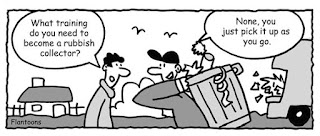Form:
- The + more (+ noun)+ verb phrase…
- The + comparative + verb phrase …
- The + comparative + the + noun + verb phrase

- El + más (+ sustantivo) + frase verbal ...
- La frase + verbo + comparativo ...
- La frase + comparativa + el + sustantivo + verbo
Function:
Double comparatives are used to
describe how two things are changing at the same time, or how one thing changes
as a result of a change in something
else.
Función:
Los comparativos dobles se usan para describir cómo dos cosas cambian al mismo tiempo, o cómo una cosa cambia como resultado de un cambio en otra cosa.
Example:
The more you study, the more you learn.
The more food you buy from local farmers, the
easier it is to support the local economy.
The more expensive the ítem, the fewer people will buy
it.
Vídeo de ayuda:
















